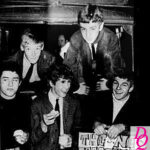Dances, much like fleeting trends and the ever-evolving music scene, often have their moment in the spotlight before fading away. But few dances in recent years captured global attention as intensely and rapidly as the Dab Dance. From its underground origins in the trap music scene to its explosive peak, where millions tuned into the Super Bowl anticipating a dab from Cam Newton, the dab’s journey was nothing short of spectacular.
However, like many viral sensations, the dab dance’s reign was relatively short-lived. Quavo of Migos, ironically one of the figures associated with its popularization, declared its retirement, marking the end of an era. To commemorate the dab dance’s brief but impactful existence, let’s delve into its story, tracing its life and times.
The Genesis: Summer 2014
The exact origins of the dab dance, like many cultural movements, are shrouded in some debate and regional folklore. While it likely emerged organically from the Atlanta youth culture, the artists who truly ignited the spark and propelled the dab into wider recognition were the Quality Control collective. This influential group included Migos, Rich the Kid, and notably, Skippa da Flippa, who are often credited with popularizing the move within the hip-hop community. It’s important to note that pinpointing the absolute originator is less crucial than acknowledging the collective effort that brought the dab dance to the forefront.
The Ascent: Spring 2015
By Spring 2015, the dab dance was beginning to permeate beyond its Atlanta roots. During the Ear Drummers/Rae Sremmurd show at SXSW, the dance move was noticeably present. Performers on stage punctuated beat drops by dipping their heads and raising an arm, a gesture that was mirrored by a growing segment of the audience. While some attendees were already in sync with this emerging trend, others, like observers from DJBooth, were initially perplexed, highlighting the dance’s nascent but growing presence. A month later, the dab’s subtle infiltration into mainstream hip-hop was further evidenced at an Earl Sweatshirt performance, where he incorporated the move, albeit with an ambiguous air of seriousness or jest. This period signaled that a new dance phenomenon was taking shape within hip-hop culture, prompting investigations and explanations from outlets like DJBooth to decipher the “dab dance” for a wider audience.
The Zenith: Winter 2015
Winter 2015 marked the dab’s complete mainstream explosion. Platforms like Snapchat and Vine played a pivotal role in disseminating the dance to teenage audiences across the United States, creating a viral ripple effect. The dab transcended the digital realm when prominent athletes, from LeBron James in basketball to Cam Newton in football, adopted the move, showcasing it on national television during high-profile games. Cam Newton’s signature dabs, in particular, became a talking point during the NFL season, further catapulting the dance into mainstream American consciousness. An NFL game’s massive viewership proved to be the perfect catalyst for propelling the dab into a full-blown cultural phenomenon. Media outlets beyond the usual hip-hop sphere rushed to cover the trend, illustrating its widespread impact. The dab became ubiquitous; it was visible in the background of live news broadcasts, and even politicians, in a bid to appear relatable, attempted the dab on shows like Ellen. What began as a regional dance within Atlanta’s trap music scene had metamorphosed into the 2015 equivalent of globally recognized dance crazes like the Macarena or the Electric Slide.
Amidst the countless dabs performed worldwide, one instance stood out: a young individual who executed the move flawlessly during a Christian ministry pledge drive. This unexpected and humorous juxtaposition perfectly encapsulated the dab’s pervasive reach into every facet of culture. This anonymous young man, in his own way, became a symbol of the dab’s cultural saturation.
The Demise: June 20, 2016
By June 2016, the tide had begun to turn. TMZ caught up with Migos outside LAX airport, where Quavo officially announced the dab’s retirement. This declaration confirmed what had been increasingly apparent: like previous fads such as “bling” or the Nae Nae, the dab dance’s peak popularity was waning. While the dab wouldn’t vanish instantly – athletes like JR Smith were still dabbing in celebratory moments, and Desiigner’s energetic, dab-infused performances were expected to continue – the official announcement signaled the beginning of the end.
The dab’s lifespan, approximately two years, was brief. While longer than a fruit fly’s existence, it fell short of a hamster’s. However, like many trends that fade from immediate popularity, the dab is poised for a nostalgic resurgence in the future, likely around five years after its peak. It was a memorable and energetic ride while it lasted, but cultural attention has already shifted to the next viral sensation. And speaking of what’s next…
By Content Creator at ten-dance.com, a dance enthusiast.

